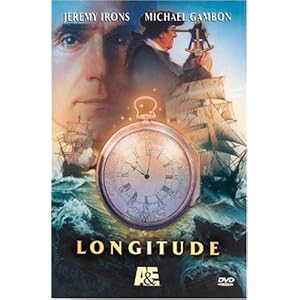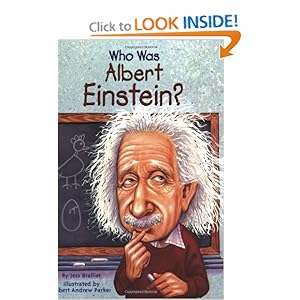I am super excited to post this blog.
As you may have noticed, especially if you know me
personally, I have a thing for geography.
Honestly, I have always loved maps.
In the sixth grade we were required to memorize all the capitals of the
states and all the countries in Europe and Asia (not sure why those continents
were chosen), and I thought it was great.
To this day that experience has helped me be more aware of places in our
world. I feel less sure of Africa and
South America.
I have wanted to give my children that same confidence
and ability to place things correctly. I especially find it invaluable to be able to know not only when but where the books we are reading and the things we are studying have taken place. I
have, over the course of the last year or so, developed a system that I believe
has helped us accomplish this goal.
Since it involves several books, including one I made and which you
can easily make, too, I decided to share.
The wonderful part of it all is that in the process we have also
stumbled a way to review everything that we study, practice low-pressure test-taking,
and my children love doing it.
 |
| If you want to make a geography book, I will be happy to help you! |
 |
| I'll even make them for you if you want. |
These are our geography books. Inside are maps divided into sections; blank
maps of 1) the world, 2) the United States of America, 3) Idaho, 4) South
America and 5) Africa. These are the
areas of focus that we will tackle this year.
I knew we couldn’t do the entire world, so we are focusing on these
parts. Because we are starting with some
of this under our belt, this is not a complete beginning. If it were I would have limited myself to
world, USA, and Idaho.
Each day (at least 3 times a week), we have a geography
drill. I tell them which map we will
work on and then give them a list of things they must place on their map. For at least 2 months all we did was the
world. Then for a month we only did the
USA. I am now going to add Idaho, but we
will continue to review and add to the bigger maps each week. It is kind of a balancing act; do what you
feel you need and what your children are interested in and can handle. These are two examples:
World
Map
Draw
and label the Equator, the Prime Meridian, the Tropic of Cancer and the Tropic of Capricorn
Label
7 continents
Label
4 oceans
Label
6 mountain ranges (Alps, Andes, Appalachians, Himalayas, Pyrenees, Rocky Mountains)
Label
2 deserts (Gobi and Sahara)
Label
3 rivers (Amazon, Mississippi, and Nile)
Label
2 canals (Panama and Suez)
Label
5 Seas (Caribbean, Caspian, Mediterranean, Red Sea, Sea of Japan)
United
States of America
Label
50 states; shade the original 13 colonies
Label
the bordering countries
Label
the bordering oceans
Label
the Gulf of Mexico
Label
the Rocky Mountains and the Appalachian Mountains
Label
the Mississippi, Missouri, and Ohio rivers
Label
the Great Lakes
Label
Washington, DC
Label
Boise, ID
Label
Cheyenne, WY
Label
Salt Lake City, UT
 |
| I do not know why this picture is sideways-I can't make it change! |
Yes,
my children can do this after limited, consistent practice. The youngest ones have abbreviations they use
if they can’t spell everything. And,
they can’t correctly identify each feature.
But, they can do enough that they feel good about it and they learn more
every time. About once a week I ask them
to fill in a couple of new things that I teach them and then we add them to our
list to label. Occasionally, I use a
fact from www.famousdaily.com to which I subscribe
in order to add a challenge to their map making.
For example, today (September 11) in 2001 - The twin towers, a symbol of
New York City centered in the heart of Wall Street - are destroyed during the
worst terrorist attack in US history. I
would have the children locate and label New York City and we would talk about
this event. Also, 1940 - World War II:
Buckingham Palace is damaged during a German air raid. We could locate and label London and then I
would google/images 'Buckingham Palace' and talk about the building: what it is
and some history about it.
Okay,
all this takes about 30-40 minutes. We
are all having fun!
Something
else that I have done occasionally for a lot of years is quizzing my kids on
what they have learned. So, when the
mapping is finished, we turn our papers over and we have “M&M” school for
about 20 minutes to finish this exercise.
On the back of the maps I quiz the children on things I want them to
remember or to memorize. I ask them to
demonstrate mathematical principles. (We
don’t review facts; I ask them things like ‘illustrate the commutative theory’.) I ask them list the first 10 (or 15 or 20)
presidents of the United States; however many they have learned so far. I ask them define parts of speech. I ask them to write the symbols for different
elements. (Last year we studied
chemistry.) I review anything we have
been studying and I reward them with M&M’s if they get the right. I’m pretty lenient if I know they are trying hard, and I give allowances for
age and ability. Some questions are
geared toward a particular child and some are worded to include different
levels of ability. I can say, “Bethany
and Benjamin draw a right triangle.
Amanda draw a right triangle and label the hypotenuse. Natalie and Noelle and Tanille, draw a right
triangle and demonstrate the Pythagorean Theorem.” or “Benjamin
and Bethany list five proper nouns.
Older girls list 4 noun jobs.” [subject,
direct object, indirect object and object of a preposition] Everyone works hard for M&M’s! By the end they have each earned, on average,
15-20 M&M’s.
Oh,
and I also write a sentence on the board from “A Sentence a Day: Short, Playful Proofreading
Exercises to Help Students Avoid Tripping Up When They Write”. I have liked this idea for years and I have finally found a book with
sentences that are pretty easy yet help them learn and I don’t have to make
them up!
Yes,
this does take an hour of our day, but everyone loves it and since it covers a little
bit of everything, on days when a lot isn’t getting done academically, I feel
like this at least gives us all a little review and keeps our minds fresh. I hope this gives someone else a good
idea! ;)
*Two
resources that I use for deciding what to label on the maps are easy to find
and any will do. I have a children’s atlas
that I use all the time. But, my wish is
to have this one:
I
also found this great resource this summer.
This is my current favorite geography resource: I can’t wait until we can locate and label
all these cool things! (I bought this at www.lovetolearn.com .)
And
a FABULOUS, I am not exaggerating, resource for learning the 50 states is:
















